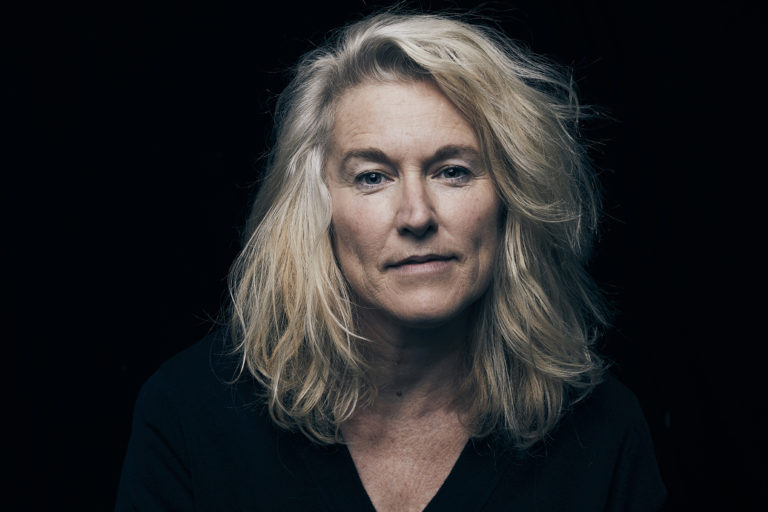One of the key roles of Independent Publishing is connecting authors with reputable providers of services and advice to help you at each step of your writing and publishing journey. By way of introduction, Independent Publishing spoke to a number of professional organisations, industry service providers and consultants to give them the opportunity to explain—in their own words—who they are, what they offer and how they can help you.
The ISBN agency: More than just a number

Maria Watts from the ISBN Agency writes:
The ISBN Agency is an integral part of a publishing journey.
The International Standard Book Number (ISBN) is a 13-digit number that uniquely identifies books and book-like products published internationally. It is the principal world-wide ordering device for the international book trade and library market. The Australian ISBN Agency assigns ISBNs at the direct request of publishers (including self-publishers).
Thorpe-Bowker is the official ISBN Agency for publishers physically located in Australia. The Australian ISBN agency is managed via the MyIdentifiers website.
For some self-publishers, once their project is complete it can be a daunting prospect to navigate the plethora of publishing services available. As well as ISBNs, we provide marketing options, an ebook conversion service, and other tools such as barcodes and QRCodes, as well as information for new publishers that will enable their book to find its potential audience.
As part of the process, all publisher and title information that is supplied to us via our MyIdentifiers website is included in our publications Bowker Books In Print®, Bowker Syndetic Solutions™ and Bookwire.
These publications are sold via subscription to those in the industry who are researching and purchasing titles regularly, including bookstores and libraries. This gives titles and publishers greater exposure and adds to the discoverability their title needs.
For my colleague Ruth Cartwright and I, making connections with authors and new publishers is one of the most enjoyable aspects of our job. We both have many years’ experience with the ISBN Agency, which has given us a wealth of knowledge to assist anyone starting a publishing journey.
Assisting a new author taking the first steps to publishing their labour of love or guiding someone through the process of creating their first ebook is such a rewarding experience for us, as I hope it is for our customers.
The Australian Society of Authors (ASA): Supporting authors

ASA CEO Olivia Lanchester writes:
Congratulations B+P on the launch of Independent Publishing!
The Australian Society of Authors’ (ASA) membership is broad; we welcome authors publishing independently or traditionally or both, and we’re thrilled to see a publication serving the dynamic and growing group of indie authors.
The ASA has been the national peak professional association, community and voice of Australia’s writers and illustrators since it was established in 1963. Whether you’re traditionally or independently published, we help you pursue a sustainable creative career through our advocacy, support and advice.
I have been at the ASA for six years, the last two as CEO, and during my time I have become even more convinced of the importance of community and knowledge sharing.
The opportunities for self-publication have grown dramatically in recent years. The barriers to entry are low, particularly in digital-only publishing, but the risks are high. As indie authors, you do not have the same opportunity as traditional publishers to spread your risk across many titles, meaning the investment of your time and money must be even more carefully assessed.
On the positive side, these days you can engage high-quality editor and designer freelancers, develop direct relationships with readers, and enjoy a greater share of sales revenue. Our experience is that it is entirely possible to publish a high-quality book, indistinguishable from traditionally published work, through careful planning and expert help. There are, however, drawbacks to independent publishing: you bear the upfront costs, print distribution and discoverability remain challenging for indie authors and some genres are far more suitable for independent publication than others. We are highly aware of the millions of books available for sale on Amazon, the majority of them self-published, which earn virtually nothing from sales.
As an indie author you must organise editing, design and lay-out, printing, distribution, and marketing your work (or outsource these tasks), as well as managing your cash flow and ensuring a profit margin. You need to understand your target audience, the formats in which they read and where they buy their books. You must build a reading community and continually leverage your backlist to provide ongoing income.
How then to manage the budget, breadth of skills required and investment of time to self-publish successfully? The answer lies in researching widely to build knowledge and upskill, and being prepared to experiment and change. I encourage all indie authors to consider joining the ASA for access to the information, advice and support you need to navigate the publication process.
How can the ASA help you?
- Ask us your questions! The publishing industry is complex and talking to the ASA will demystify the process. We also have comprehensive FAQs available on our website, a consultation service, and useful contract templates.
- If you are self-publishing you will inevitably come across service providers that are opportunistically seeking to make money out of authors rather than book sales. We have heard many cautionary tales and can help you avoid common mistakes.
- We offer self-publishing workshops each year as part of our Professional Development program. To make the best decisions, you need access to expert advice but also connection with other indie authors to share experiences.
- We offer a print distribution service and New to View catalogue, both of which may be of interest to indie authors.
Our members are our lifeblood and all authors are warmly welcomed at the ASA. We’re here to support you.
Find the Australian Society of Authors on Facebook, Instagram, and Twitter.
DMCPR Media: Boutique PR for books

Debbie McInnes, founder and director of DMCPRMedia, writes:
When it is time to launch your book into the world, how do you get the word out there? DMCPR Media is an independent boutique Australian PR agency with decades of experience and a small flexible team. We specialise in publicity campaigns for books, awards, festivals and corporates.
DMCPRMedia founder and director is Debbie McInnes, who is frequently described by industry peers as a ‘powerhouse publishing consultant’. Debbie and her team of experienced senior publicists Ineke Walker and Catherine Szentkuti, publicist Sam Symonds and publicity coordinator Anna Tidswell make for a strong and dynamic team with a broad range of knowledge and relationships, all with their own specialty and flair. DMCPRMedia is flexible and adaptable in approach and able to easily craft tailor made pitches for each outlet within each specific project.
Getting media coverage for books can be a challenge as the traditional media landscape is changing and traditional avenues such as book review pages are shrinking. However, there are new opportunities to be had in the online world with blogs, social media, and face to face events via bookstores and libraries (which, of course, when they can’t go ahead we always go the option of Zoom). When combined, all these elements present possible avenues for authors, particularly first-time authors who do not yet have an established network.
DMCPR works with all the major publishing houses, handles literary awards and festivals, and has a range of clients from other sectors. Visit our website to find out at the DMCPR website here.
IngramSpark: Print on demand

Debbie Lee, IngramSpark senior key account sales manager, writes:
Hi to all the indie authors and small publishers out there!
Whether you are working on one book and one book only, or are developing a list of your own and/or other authors’ titles, I am delighted to be your ‘go-to’ at IngramSpark.
IngramSpark is effectively a print-on-demand platform that also gives you access to a global network of retailers. You simply upload your print-ready PDF files (and/or epubs for ebook distribution), and provide all the essential metadata: title, blurb, ISBN, author bio, trim size, BISAC codes, keywords, quotes, as well as the price points and discount for each book in various regions as required (AUD, GBP, USD, EURO and/or CAN). We then feed that information to our network of 40,000+ retailers, library suppliers and other channel partners. When a customer orders a book, we print-to-order and ship-to-shop, and pay you for the sale. This is referred to as your Publisher Compensation and equates to your net receipts (RRP minus the discount) less the cost of print.
We also have print partners in a growing number of locations (e.g., Germany, Russia, Poland, Italy, Spain, Brazil, India, China, South Korea and Japan) that each have their own network of retailers. They convert your USD pricing to local currency and when they receive an order, we provide the file for local one-time printing. Everything is quality assured, there is no risk of piracy, and all in all, printing-in-market represents a highly sustainable, economic and super swift form of order fulfilment; not to mention a passive income stream so you can get on with the business of publishing.
Of course, you can also place orders directly via your account—from a single copy to as many different titles in various quantities as required. We print within three to five days on average, and you can select to print in AU for delivery throughout ANZ, the US for delivery in North and South America, and the UK, which covers Europe, Africa and Asia. We have just launched a new print facility in Sharjah in the Middle East which expands our footprint and access to the market even more.
As a former trade sales representative and publisher of higher education texts and professional resources, nothing delights me more than seeing great books come to life and ensuring access to the broadest possible market. Gone are the days where large print runs were de rigueur. Print-on-demand means less guesswork and no excess stock or wastage, which is necessarily a lot kinder to the environment, not to mention the hip pocket. We are non-exclusive (meaning you can still print elsewhere as well if you need), and you can change or cancel pricing at any time. You can even upload revision files to keep your list as accurate and up-to-date as possible. If you have any questions don’t hesitate to get in touch!
Contact Debbie Lee on email or at +61 448 800 464
RM Marketing Services: Marketing and digital specialists

RM Marketing Services director Rachael McDiarmid writes:
RM Marketing Services was established in April 2014 as a specialist consulting and outsourcing provider to local and international publishers, distributors, library vendors and other organisations who have an interest in selling and marketing books and digital content. Director Rachael McDiarmid has been in the book industry for over three decades. She has worked on both sides of the fence—working primarily in academic and professional publishing, as well as a long stint in library supply where she managed publisher relations for the print, digital and multimedia supply chain, as well as a trade distribution business. Rachael was the face of the James Bennett–Nielsen BookData joint venture for many years in the mid-2000s and has worked with Blackwell Book Services and Baker & Taylor/YBP on their retail and digital projects in the ANZ region. These days she is the publisher relations contact for ProQuest’s Ebook Central, is an affiliate senior associate for Maverick Publishing Specialists, and will be adding another string to her bow in 2022 with the teaching of the Book Marketing & Sales Unit at the University of Sydney. It’s not a surprise to those of us in the industry who know her well that she has A LOT of NDAs—her fingers are always in a lot of pies!
When it comes specifically to indie publishers, RM Marketing Services provides consulting in sales, marketing and distribution—covering everything from metadata workflows, digital marketing, website maintenance, social media management, publicity and promotions, to sales strategy and channel opportunities for print and digital products. While this is after the editorial and production process, she believes book marketing begins before this so her tip for self-publishers is don’t leave the marketing and distribution to when the book is available. Get professional advice, be guided by leaders in the industry, join industry bodies (the ASA, the Small Press Network, the APA) and build your brand early.
Her number one tip however is to know your metadata. You can have the best promotional campaign in the world but if no one can discover your book, it’s a failure. Getting your bibliographic data correct gets you in the door. It’s then up to your marketing and sales strategy to get you through it.
Contact RM Marketing Services for consulting and special project work. You can get in touch with Rachael and her affiliates via her website or email.
Ventura Press: Empowering self-publishers

Ventura Press publisher Jane Curry writes:
When Independent Publishing asked me to contribute to this new journal dedicated to the self-publishing community, I was delighted to accept as I believe there has never been a better time to challenge the existing norms of our industry. Publishing is largely a closed shop to outsiders and self-publishing has been viewed as the poor relation for far too long.
I would like to reposition self-publishing as a valid and vibrant pathway to market, which has the capacity to both empower the author and open up the book world. In any other walk of life being willing to ‘back yourself’ is seen as noble and worthy. And so it should be for publishing.
The time is right for self-publishing to grow as it captures the force multiplier effects of the new digital world. A TikTok sensation spruiks their own book online with books printed and delivered direct to the customer. That is gold star ecommerce. Similarly, a successful TED Talks author can capture the demand they alone generate and secure the full margin (and keep world rights) for themselves.
Self-publishing in many ways has to embrace its outsider status and recognise its power. Central to this is print-on-demand technology which is a game changer for the self-published author: no holding stock, no warehouse and no money given away to access distribution.
Over the years I have helped many authors back themselves, in fact the imprint Impact Press was established precisely for authors who were prepared (and able) to share the commercial risk. I have fond memories of a working lunch with the ASA’s Olivia Lanchester as we negotiated the blueprint contract for Impact authors. It shows what a fabulous industry this is when ‘opposite’ parties reach cordial agreement.
I believe the single most important issue for self-publishing to thrive is to shed the idea of being second best to ‘proper’ publishing. This sense of inferiority leads to feelings of shame and a reluctance by authors to admit they have self-published. How wonderful it was to hear the fabulous ( and initially self-published) Brené Brown saying exactly this on Elizabeth Day’s How to Fail podcast.
Once writers embrace the freedom of the self-publishing model, and harness demand they have created, they can grow their readership or brand outside the publishing establishment.
If you look at this concept through the lens of diversity and inclusion it is even more exciting: writers of a diverse background do not need to wait for the mainstream to choose them, they can choose themselves, curate their own voices and not allow their talents to be monetised by the same houses who have ignored them for so long.
I know an exciting future awaits for the book world across both traditional and new pathways to market. Books, authors and society will be all the richer for it.









